Mostly Mute Monday: The Cat’s-Eye Nebula
The future of stars like our own, in a story only pictures can tell.
“I lie on the floor, washed by nothing and hanging on. I cry at night. I am afraid of hearing voices, or a voice. I have come to the edge, of the land. I could get pushed over.” –Margaret Atwood
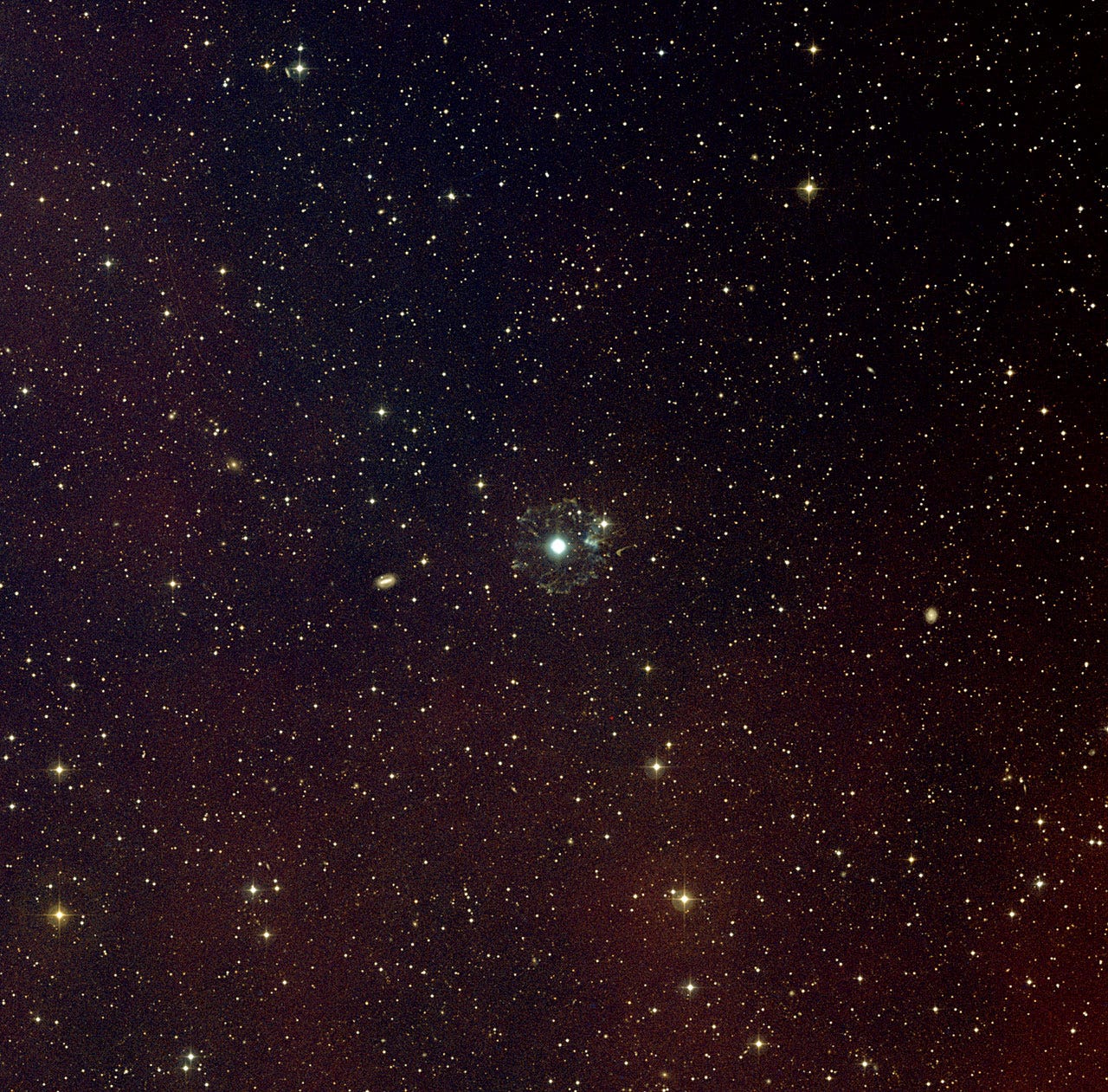
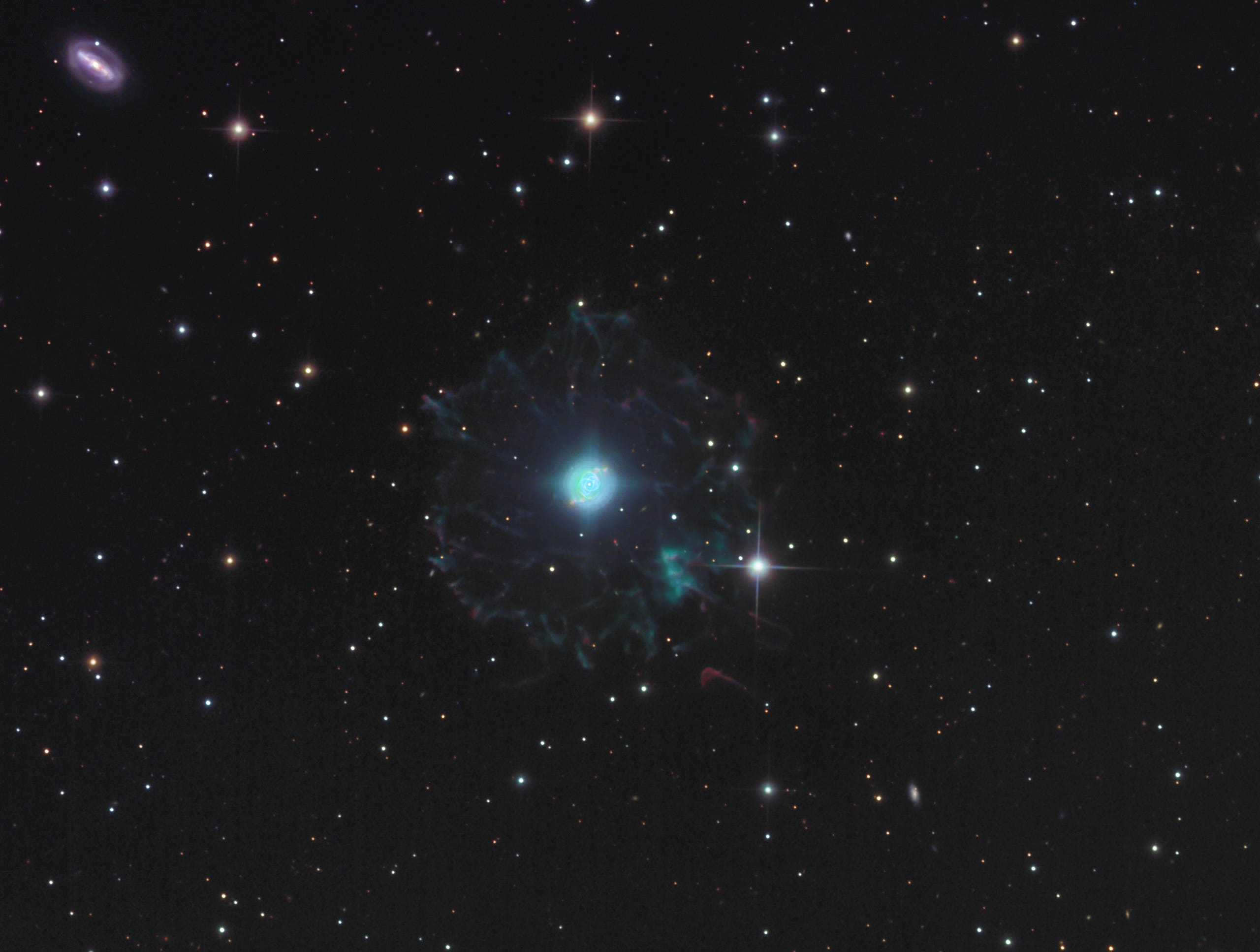
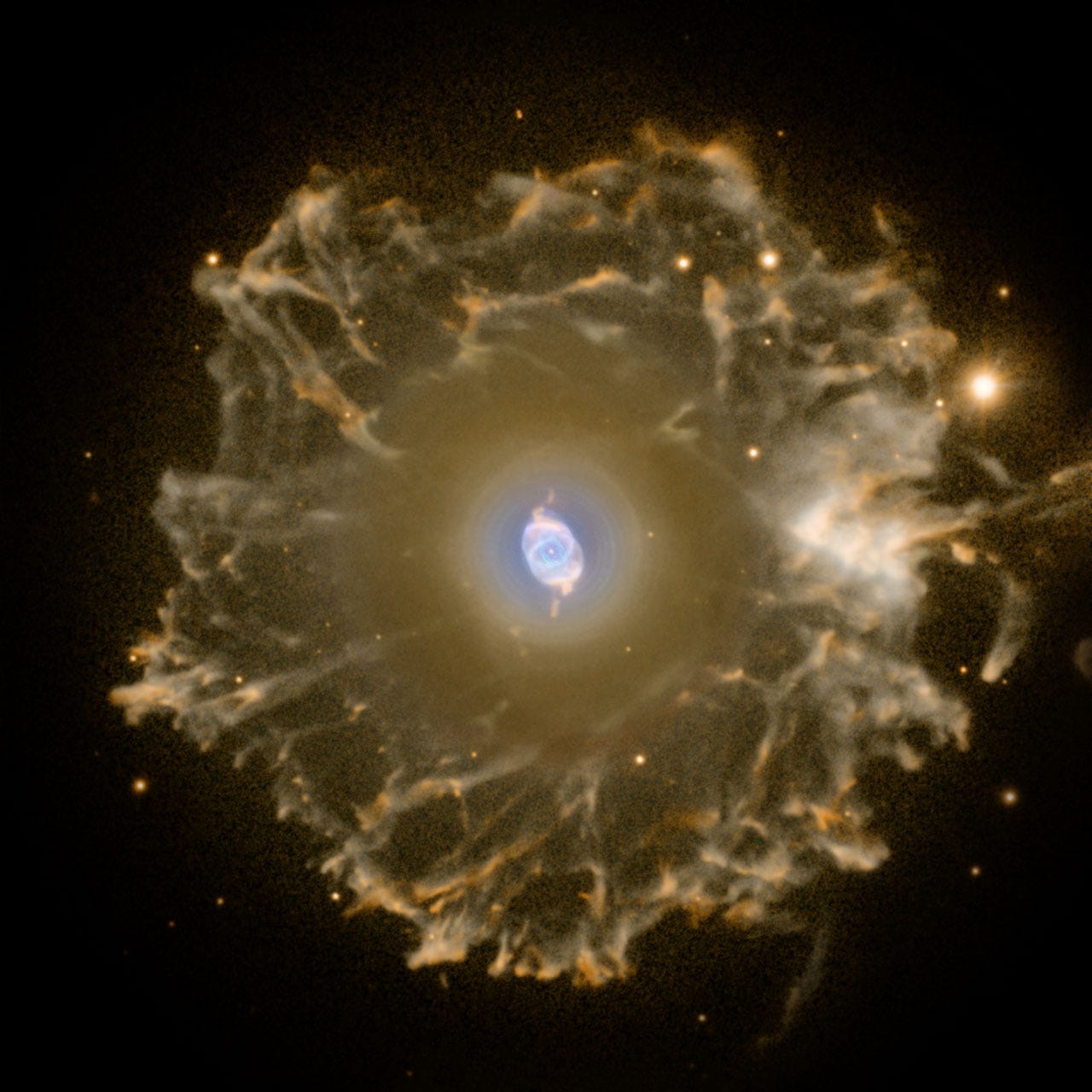
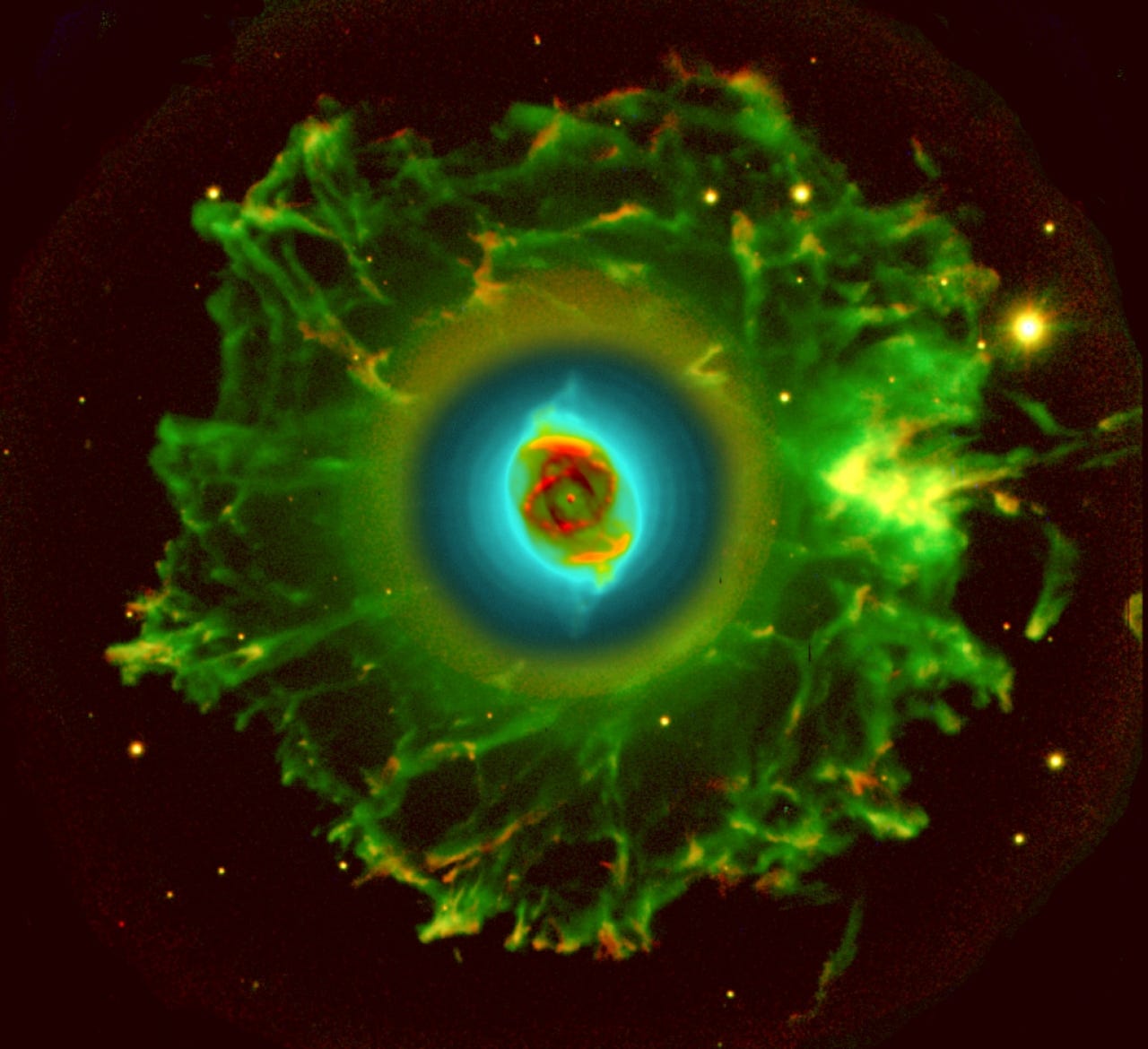
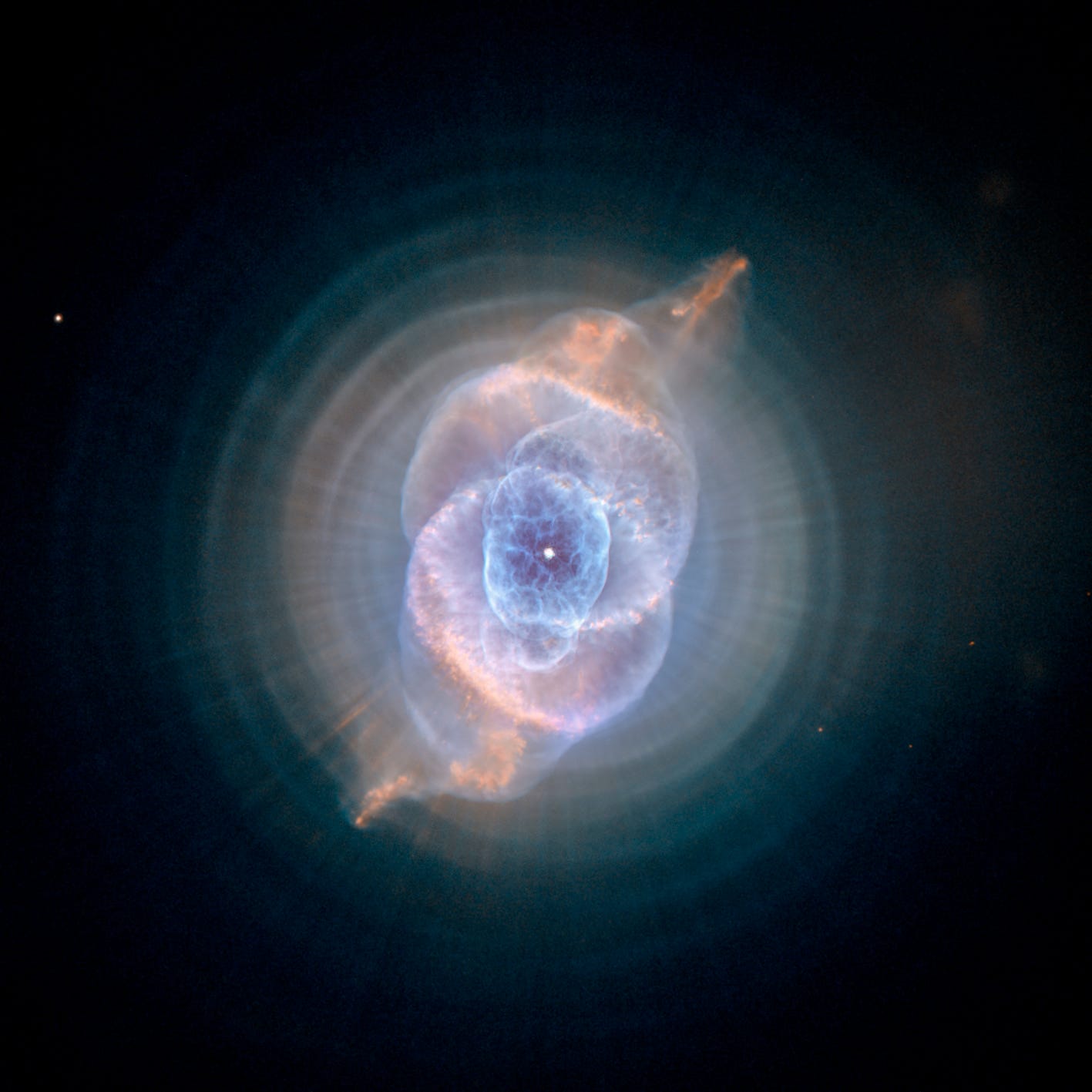

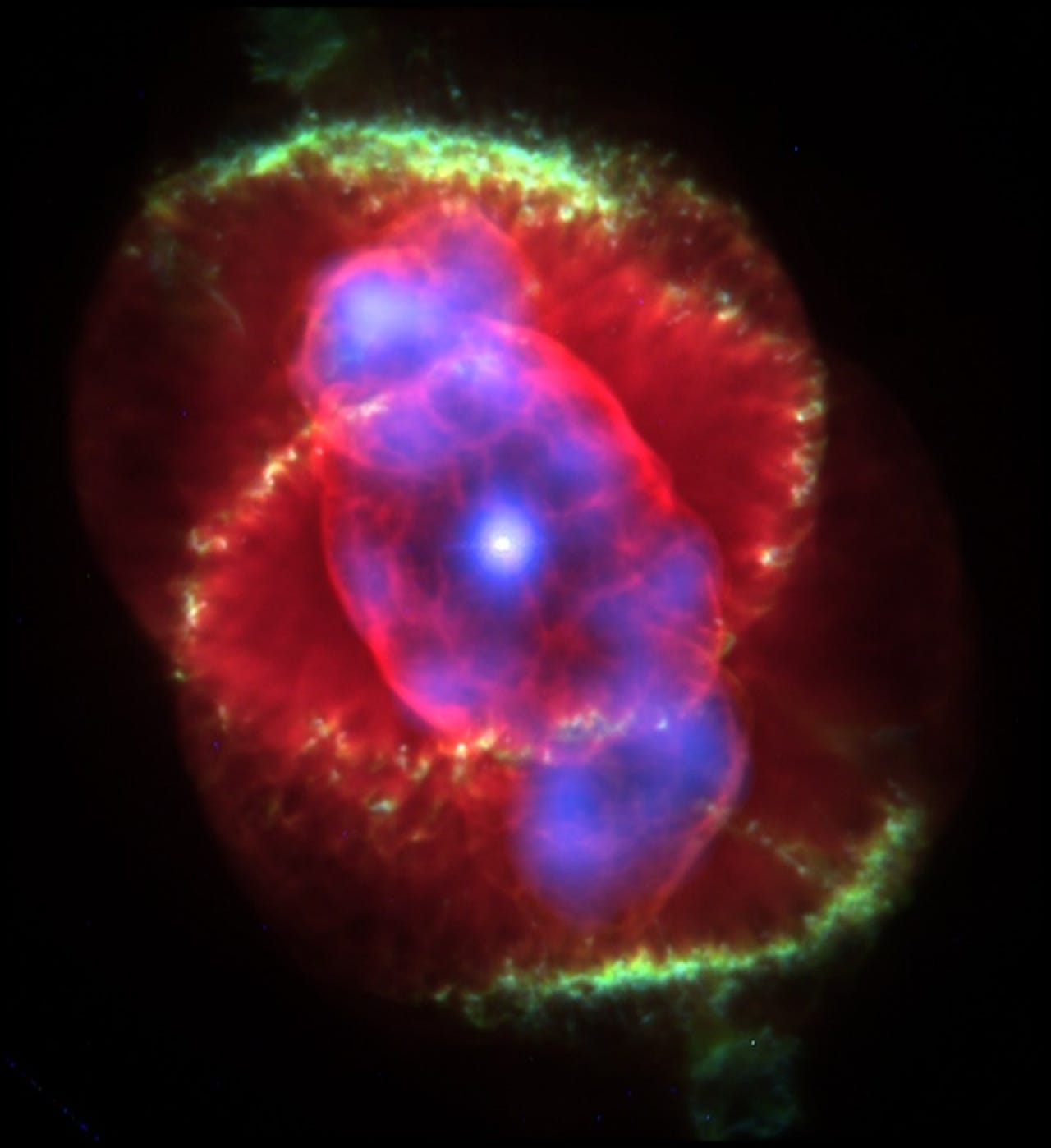

When stars between about 40% and 800% the mass of our Sun run out of hydrogen fuel in their cores, they expand into a red giant phase, burning helium in their center. The intense stellar winds produced blow off the star’s outer layers, and when the core runs out of helium to burn, the central region contracts to a white dwarf, producing intense ultraviolet light that lights up the expelled gas and ions, often found in extremely rare ionization states: a planetary nebula. While about 20% of planetary nebulae are spherical, most are asymmetrical, like the Cat’s Eye Nebula (NGC 6543), highlighted here. It continues to rapidly expel matter at a rate of 9 lunar masses per year at speeds between 0.7-to-5.0% the speed of light. The nebula consists of mostly hydrogen and helium, with carbon, nitrogen and oxygen found throughout and a significant population of much heavier elements — formed through the s-process — found near the center. Whether the nebula’s shape is due to having a binary companion, properties of its magnetic field, pulsations of the dying star, asymmetric stellar winds or another cause is still a mystery.
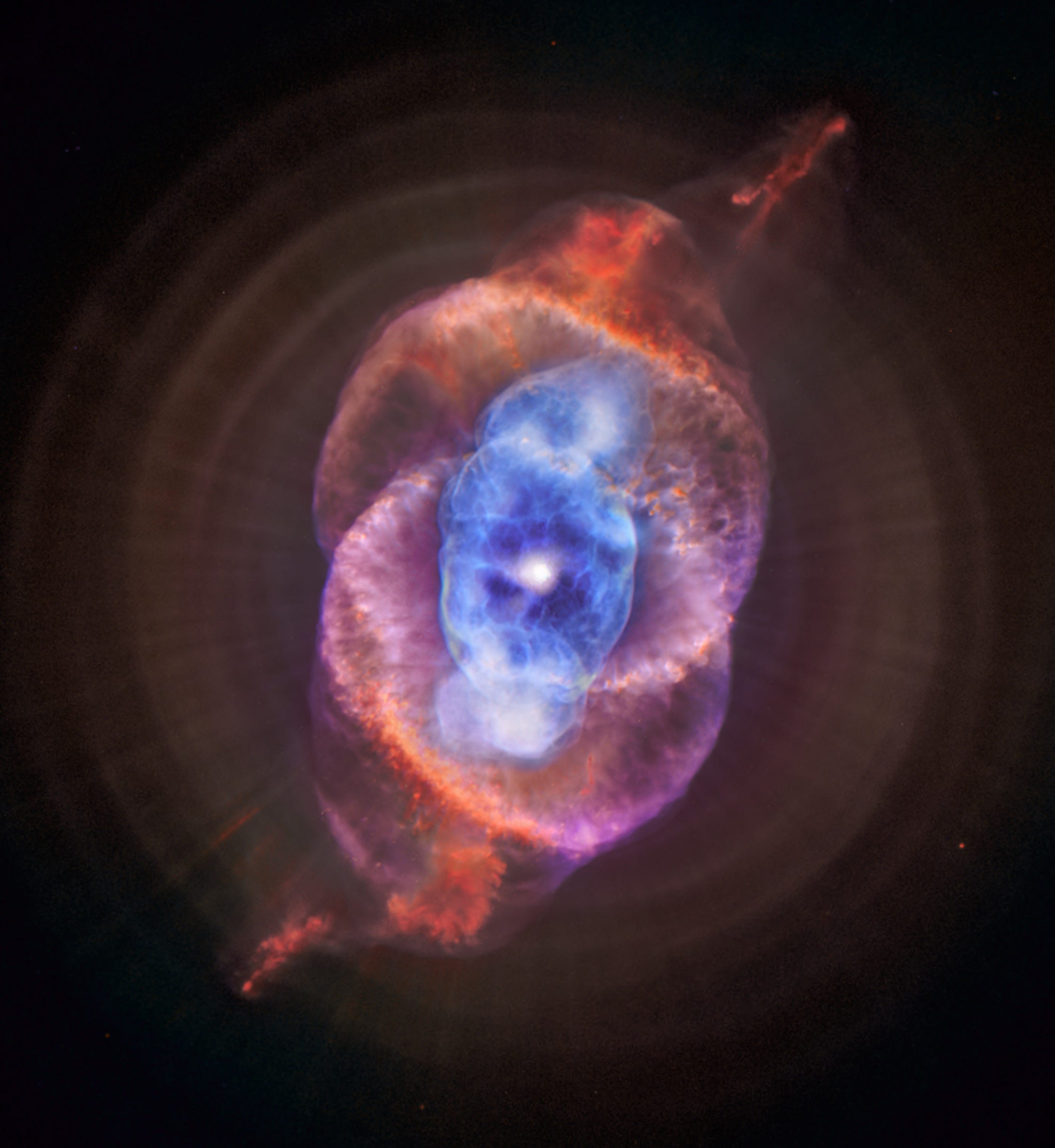
Mostly Mute Monday is a new, weekly series here on Starts With A Bang, that highlights one particular aspect of astronomy or astrophysics in visuals, with no more than 200 words of text at the end explaining what we’re looking at.
Leave your comments at the Starts With A Bang forum on Scienceblogs.





